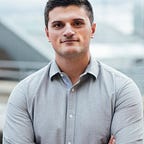Weight Watchers Chief Product Officer exclusive interview discussing product management, modernization and enhancing customer experience both on and offline
We recently sat down with Weight Watchers Chief Product Officer Michael Korcuska to discuss his current role with the famous weight loss brand, his challenges and predictions for the future of digital product.
Michael will be joining us and 500+ product management, UX design and engagement executives at this years Open Mobile Summit (November 27–28 SF) to discuss ways in which to interact with and engage the connected consumers across all devices. For more information visit our website: https://events.incite-group.com/oms/
1. Could you tell us a bit about your role as Chief Product Officer at Weight Watchers?
There’s a misconception that Weight Watchers “products” are low-calorie packaged foods. You might be surprised to learn that, while we do sell some food, more than 80% of our revenue comes from our subscription business. In fact, we ended Q1 with 4.6 million subscribers.
WW has a food and activity program — WW Freestyle — that has been scientifically proven effective to help people develop healthy habits. That is the main product we sell. It is supported by digital tools (web and mobile) and, for many members, the opportunity to attend weekly meetings for information, inspiration, and community. My team is responsible for those digital tools. It’s a fairly typical organization with product managers and designers and user researchers. Engineering reports to our fabulous CTO.
What’s a bit unusual is that the product team at WW is also responsible for the experience in the meeting rooms. This is new for us. We are working to provide a unified member experience…something that is seamless, online and offline.
2. What are your top 3 priorities for 2018 when it comes to your brands digital product?
Well, there are a lot more than 3 important things that we’re doing.
First, as I mentioned above, we need to do a better job of integrating our online and offline experience. As well as modernizing WW meetings and making them more relevant to a wider variety of people.
Second, we have an amazing program for fitness and for a positive mindset. Our digital tools are best in class for food and nutrition, they don’t reflect the quality and depth of our science and program in activity and mindset. So we need to bring those forward.
Finally, we’re exploring how we will use voice as an interface. And there are a number of other emerging technologies that seem like they could be transformational…stay tuned on that front.
Actually, I can’t resist mentioning a fourth…and that’s the global need for proven health and wellness solutions. We operate in the US, Canada, Australia, New Zealand, Brazil, and in some of Europe. But the entire world needs to learn how to build and sustain healthy habits.
3. What new technologies or trends do you see impacting digital product and the wider industry this year?
As I mentioned above, voice is a big one for us. Obviously AR will have a large impact on the wider industry…I think it is going to provide a lot more value in the medium term than VR.
Overall, though, I think consumers have changed. They want companies not only to service a functional need for them. They also want them to be making a positive contribution to the world. Earlier this year we got very specific about our purpose: We inspire healthy habits for real life. We’ve also defined clear metrics and organized several large initiatives to deliver on that promise. But, regardless of particular initiatives, it helps everyone in the organization know why we are here and what we are trying to accomplish.
4. As a company that now utilizes both digital and real-life experiences, what unique challenges are you facing at Weight Watchers to deliver a consistent and seamless experience across all a consumer’s interactions with the brand?
One of the most complex things is understanding what the consumer may have experienced on-line and in real life. A meeting leader may not know what the member has been doing in the app.There are privacy issues and, of course, only so many hours in the day. And online we probably don’t know what happened for the member in their most recent meeting. It’s different from ordering a coffee at Starbucks because our meetings are rich and often emotional experiences. We can certainly do better about sharing knowledge across these channels but it will never be perfect. So the challenge is to design experiences that are flexible enough so the member can get what they need in the moment.
We’re thinking about the long-term structure of our product teams to try to address this. Remember when smartphones first rolled out and everyone built a mobile team? But, by now, most product teams are organized around user needs, not platforms, and are expected to deliver user experiences across desktop and mobile. And maybe voice. We’re asking the question “What if we considered meetings to be another delivery platform?” Should our member onboarding team, for example, just be thinking about web and mobile or should they be thinking about what should happen in the meeting too? For now, though, we have a dedicated team designing the meeting experience. But next year, who knows?
5. As a keynote speaker at this year’s show, what are you hoping to learn and take away from the summit?
It’s always great to take time to exchange ideas. We get so busy with our work it is nice to carve out time to connect with others doing similar work.
Being a product leader is as much about building product teams as it is about building the product itself. So I’m interested in talking with others about developing talent and creating effective teams. One thing I’m specifically interested in, at this particular moment, is how companies are thinking about attracting talent, especially engineering talent.
